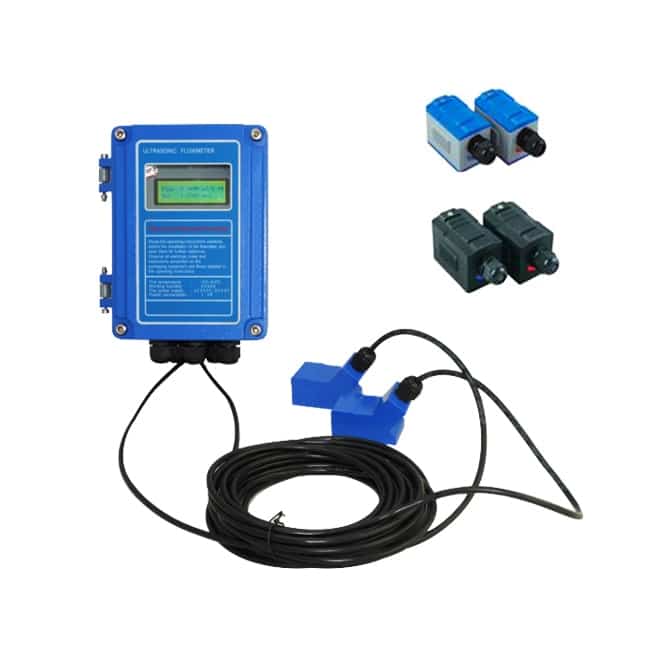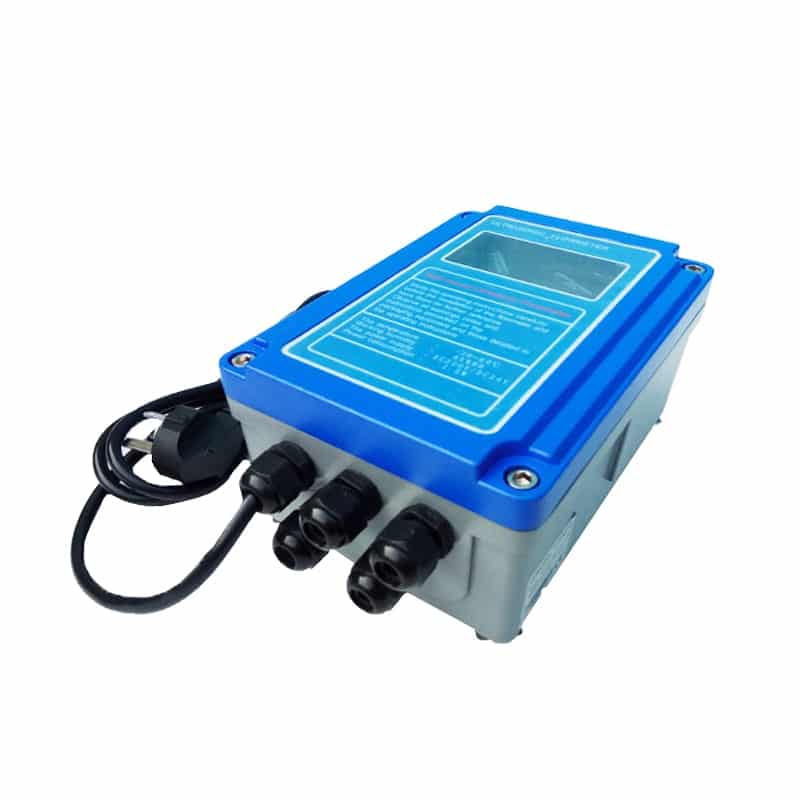What is doppler flow meter?
Doppler flow meter is a type of ultrasonic flow meter. These devices use the scientific principle of the Doppler effect to measure the volumetric flow through a pipe. This is done in such a way that the Doppler flow meter is clamped to the outside of the pipe, so it does not disturb the flow as other types of flow meters require.
Doppler flow meters use the frequency of the ultrasonic beam to determine the flow rate of a liquid. This measurement is possible due to the Doppler effect discovered by Austrian scientist Christian Johann Doppler in the early 1800s. Essentially, the Doppler effect suggests that the frequency of a sound wave depends on the motion of the sound receiver, or the source of the sound relative to the medium through which the sound travels. In this case, the medium in which the sound wave propagates is the liquid flowing through the pipe.
In order for a Doppler flowmeter to work properly, the liquid must contain particles or bubbles, so it works well for dirty liquids, but not so well for clean water. The flow meter emits an ultrasonic signal, which is reflected by particles and bubbles, resulting in a shift in signal frequency. This frequency shift is measured by the flowmeter.
How does doppler flowmeter work?
The Doppler flowmeter converts the measured frequency shift into a volumetric flow rate. The velocity of flow in the pipe is calculated using the frequency shift, the original frequency of the ultrasonic signal, the velocity of the sound through the emitter material, and the sine of the angle of the signal into the liquid. Once the velocity is known, the volumetric flow rate can be easily calculated by multiplying the velocity by the area of the pipe.
In calculating the flow rate, the meter detects the velocity at the discontinuity, not the velocity of the fluid. The velocity of flow (V) can be determined by the following equation.
V = (f 0 – f 1 )Ct / 2f 0 cos(a)
where Ct is the speed of sound inside the transducer, f0 is the transmission frequency, f1 is the reflection frequency, and a is the angle of the transmitter and receiver crystals with respect to the tube axis. Since C t / 2f 0 cos(a) is a constant (K), the relationship can be simplified to
V = (f 0 – f 1 )K
Thus, the flow rate V (ft/sec) is proportional to the change in frequency. The flow rate (Q in gpm) in a pipe with a specific internal diameter (ID in.) can be obtained by the following equation
Q = 2.45V(ID) 2 = 2.45f 0 -f 1 )K 2
The presence of acoustic discontinuities is critical to the proper operation of a Doppler flow meter. The generally accepted rule of thumb is that for proper signal reflection, at least 80-100 mg/l of solid particles are +200 mesh (+75 microns) in size. In the case of bubbles, a diameter of 100-200 mg/l between +75 and +150 microns is ideal. If the size or concentration of the discontinuity changes, the amplitude of the reflected signal will be shifted, introducing errors.
Doppler flowmeters may have one or two sensors. Both types contain a transmitter and a receiver, but in a single sensor Doppler flow meter they are contained in one sensor. Reflected particles in the liquid reflect the transmitted signal back to the receiver. In a dual sensor flow meter, the transmitter and receiver are sandwiched on opposite sides of the pipe.
Doppler flow meters can be a good monitoring option because they do not interfere with flow and require little maintenance. In addition, they can provide fast and accurate flow measurements for a wide range of liquids under a variety of temperature and flow conditions. On the other hand, liquids must contain air bubbles or particles for the meter to work properly, and lined or stainless steel piping can interfere with the transmitter signal and reduce measurement accuracy.
Advantages of Doppler ultrasonic flow meters
Doppler flow meters can be used where other meters do not work. This may be liquid slurries, aerated liquids or liquids containing small or large amounts of suspended solids. The advantages can be summarized as follows.
- Less obstruction to flow
- Can be installed outside the pipe
- Pressure drop equal to the equivalent length of a straight pipe1
- Low flow cut-off
- Corrosion resistance
- Relatively low power consumption
Extended reading:
Ultrasonic flow meter working principle
Select the right water flow meter
Mass flow rate vs volumetric flow rate
Relation between flow and pressure



